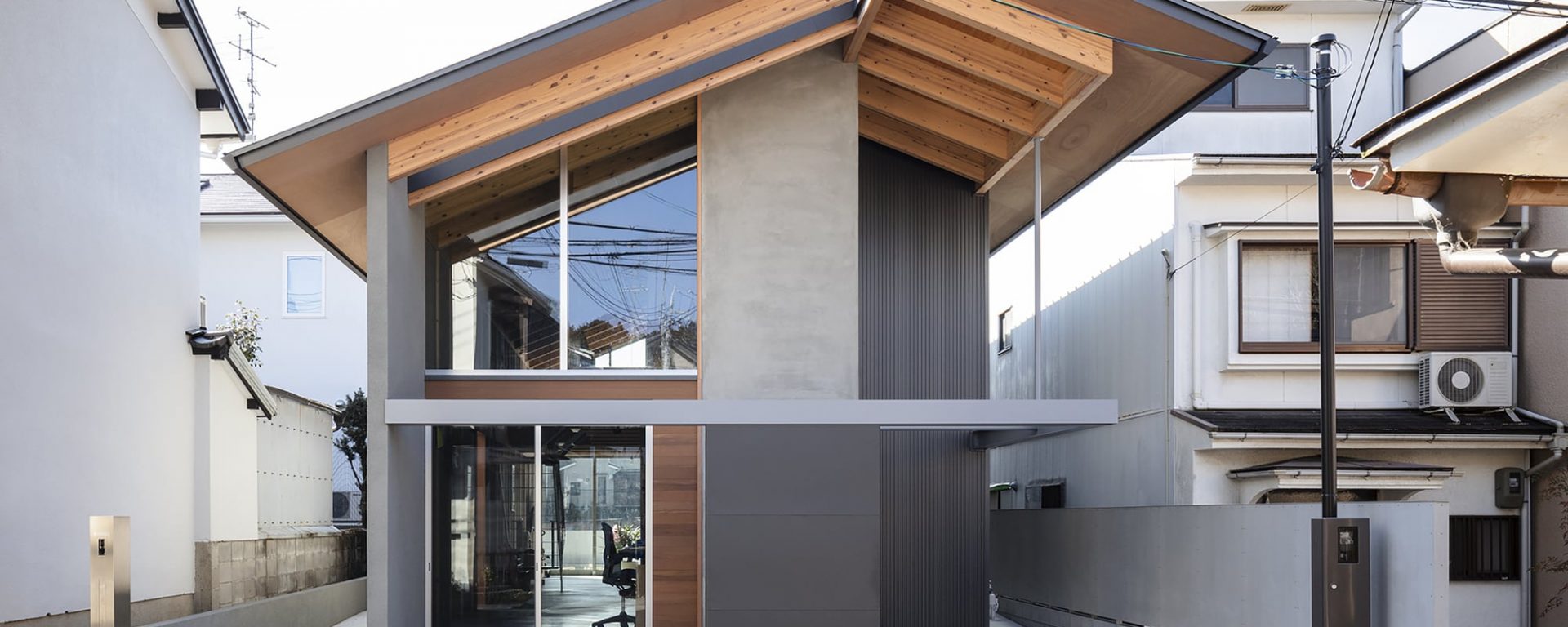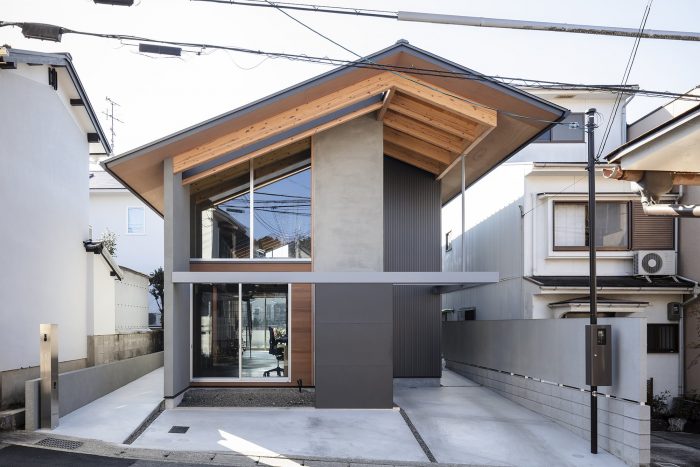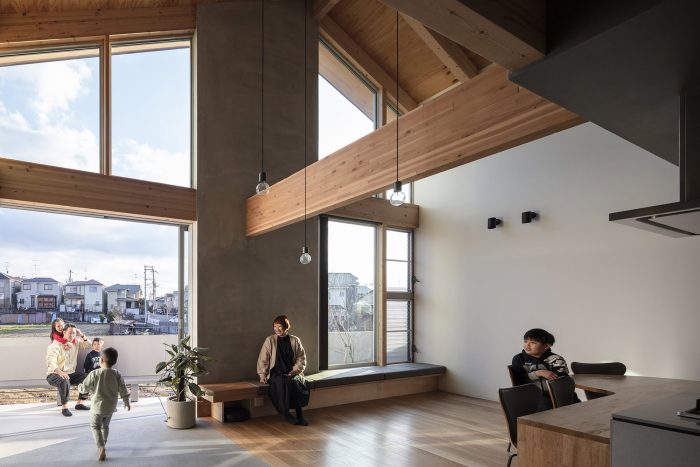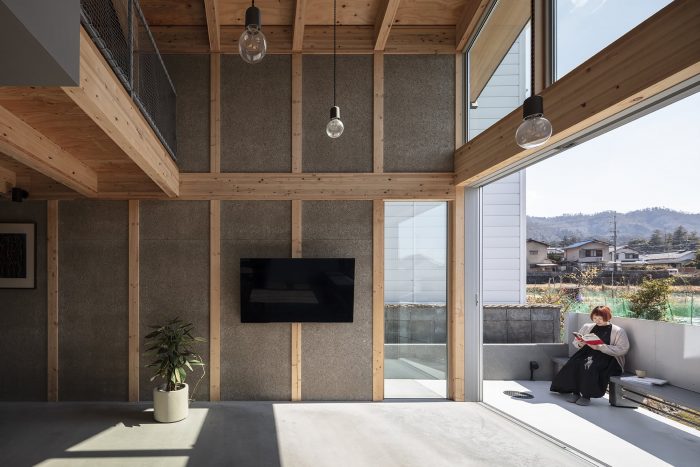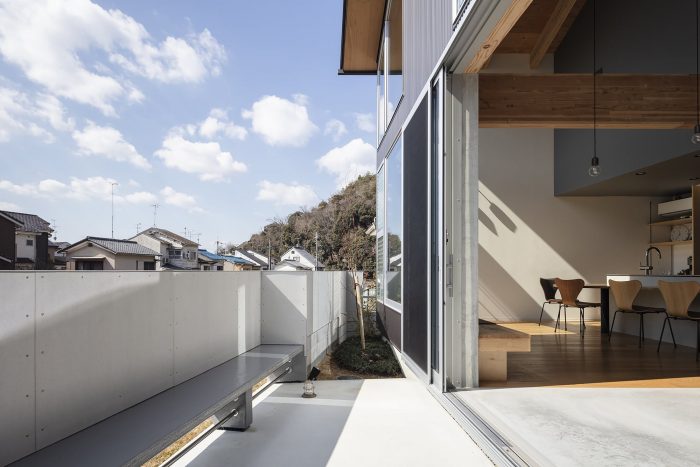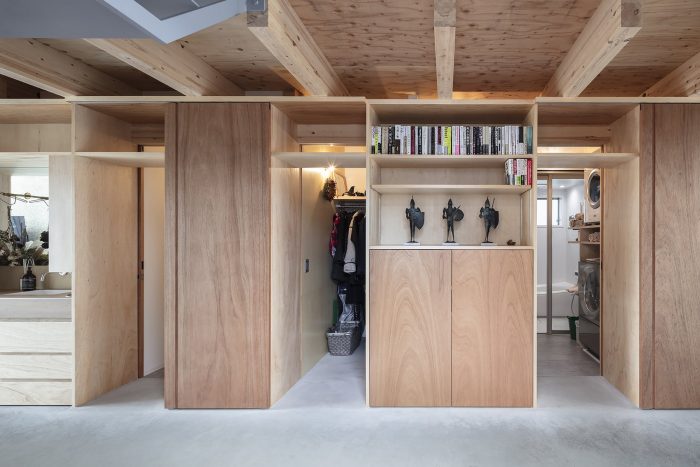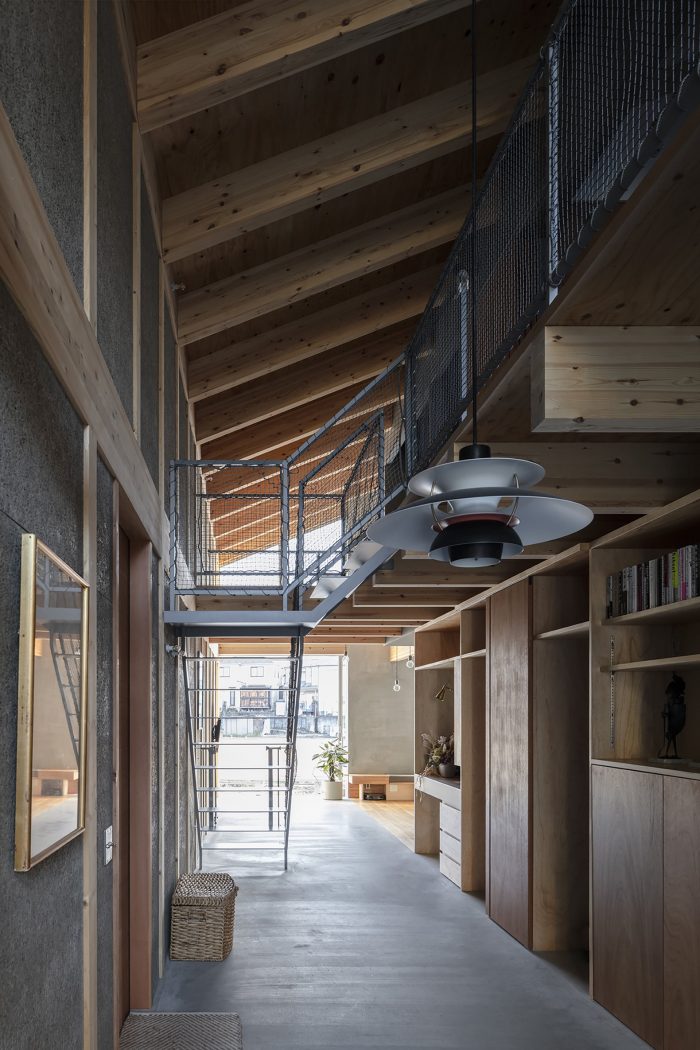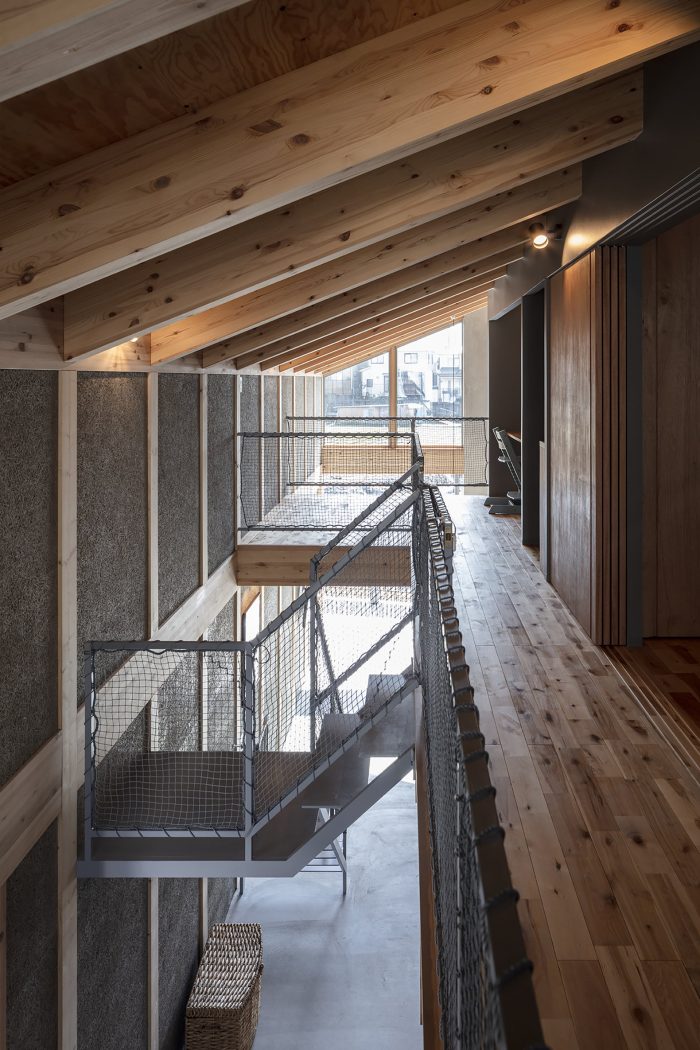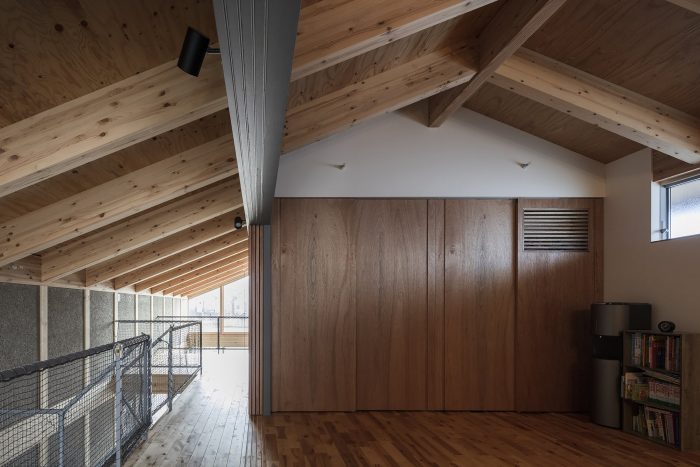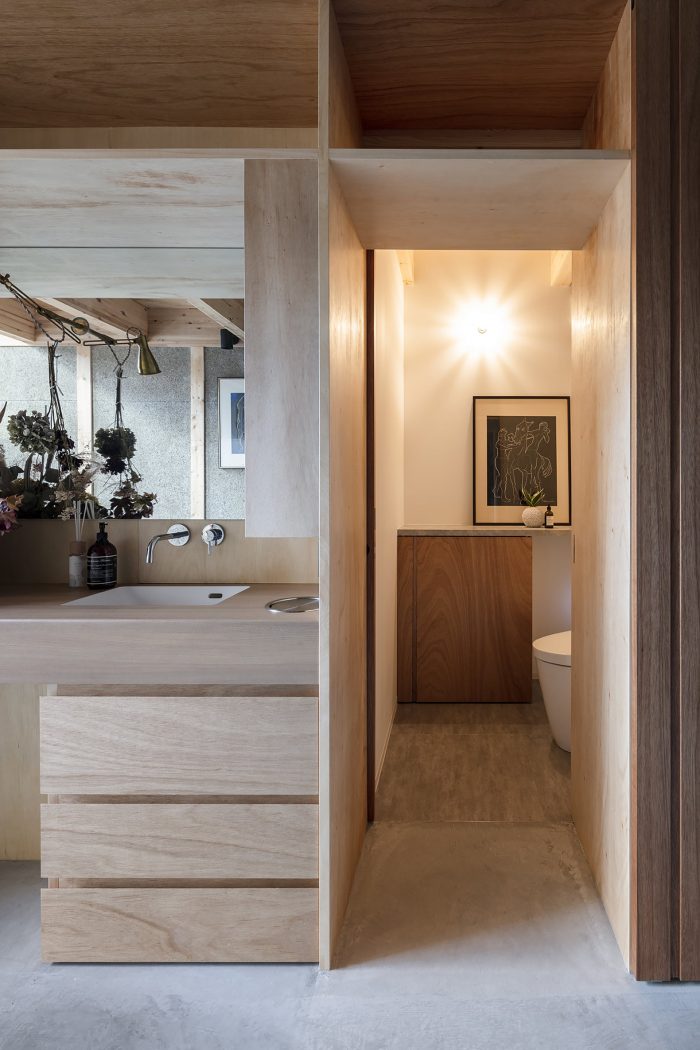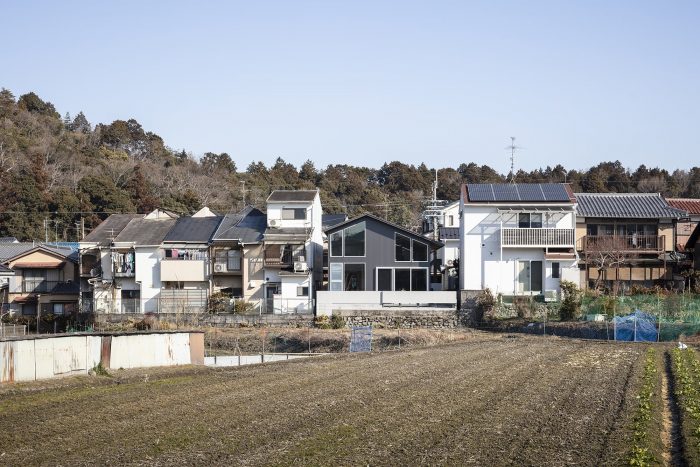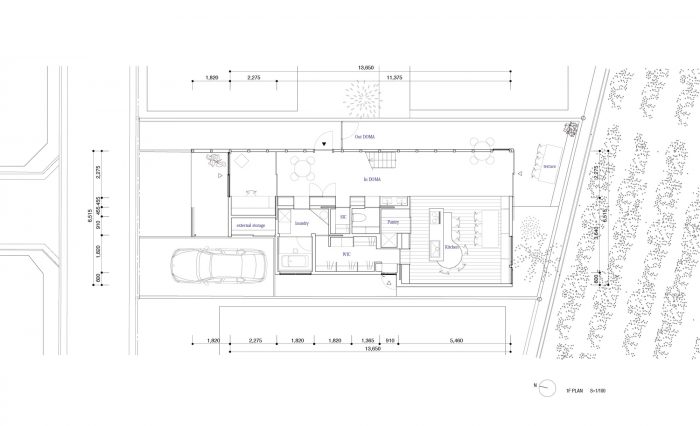一所房子,一对孙子和他们的五个孩子住在他们祖母曾经居住的土地上。这对夫妇是企业家,积极工作并与各种人交往。我们的目标是创造一个将生活和工作融为一体的房子,并能容纳各种活动的丰富性。虽然场地南侧有一块田地,但住宅区与田地隔开,以至于从街道一侧无法看到它。由于景观的限制,有必要延长房屋的屋檐,所以建筑与邻近土地之间的空隙被做成了一个外侧的土层,后面是一个开放空间。农田一侧的露台,可以从内部和外部进入,为经常欢迎访客的房子创造了一个供各种人聚会的外部场所。
A house where a couple of grandchildren and their five children live on the land where their grandmother used to live. The couple are entrepreneurs, actively working and interacting with a variety of people. We aimed to create a house that integrates living and work, and that can accommodate a variety of activities as a richness. Although there is a field on the south side of the site, the residential area is separated from the field to the extent that it cannot be seen from the street side. The gap between the building and the neighboring land was made into an outer earthen floor with an open space to the rear, as it was necessary to extend the eaves of the house due to landscape restrictions. A terrace on the farmland side, which can be accessed from both inside and outside, creates an outside gathering place for a variety of people in a house that often welcomes visitors.
室内空间的安排是将水和其他设施放在西侧的两个门面房之间,向东突出2275毫米的屋檐与外部的土炕平行放置,形成一个连接道路和农田的内部土炕。这个两层的拱形土楼空间将每个空间与外部连接起来,创造了一个舒适的生活空间,让光线、风和视线从北到南穿过,同时涵盖了各种活动。这个空间既是一个入口,也是一个客厅。它也是孩子们奔跑的地方,是开会的地方,是工作的地方,是创造思想的地方。
The interior space is arranged with the water and other facilities between the two frontage rooms on the west side, and the eaves, which protrude 2,275mm to the east, are placed parallel to the exterior earthen floor, creating an interior earthen floor connecting the road and farmland. This two-layered vaulted earthen floor space connects each space to the outside, creating a comfortable living space that allows light, wind, and sight lines to pass through from north to south while encompassing a variety of activities. This space is both an entrance and a living room. It is also a place for children to run around, for meetings, for work, and for the creation of ideas.
居民的活动(生活和工作),各种人聚集在一起,通过南北向的通道渗入到周围的区域,创造了一个像 “雁道 “一样的新城镇景观。位于这条 “街道 “上的钢制楼梯也作为一个结构支点,实现了一个连续的中庭空间。将内部土层与居住空间隔开的书架储存空间被用作结构元素,以防止凸出的二楼地板发生偏移和振动,从而创造了一个通过一系列小元素支撑大空间的结构。
The activities (living and working) of the residents, where various people gather, seep out into the surrounding area through the north-south passage, creating a new townscape like the “Wild Geese Road”. The steel staircase located on this “street” also functions as a structural fulcrum to realize a continuous atrium space. The bookshelf storage space that divides the inner earthen floor from the living space is used as a structural element to prevent deflection and vibration of the second-floor floor that juts out, thus creating a structure that supports a large space through a series of small elements.
此外,该计划没有将各个房间分配给个人,而只是提供了一个大空间和一个小空间或工作区,它们可以成为主要的篮子。我们没有给每个空间命名,而是利用贯穿住宅的 “街道 “的多样性,想象一个家庭根据他们的成长、生活方式和工作时间,在任何时候寻找和发现一个合适的舒适场所。
In addition, the plan does not assign individual rooms to individuals, but simply provides a large space and a small space or workspace where they can be primary baskets. We did not give each space a name, but rather took advantage of the diversity of the “street” that runs through the residence, imagining a family seeking and discovering a comfortable place to stay that is appropriate at any given time, depending on their growth, lifestyle, and work hours.
Architects: SAI Architectural Design Office
Area : 130 m²
Year : 2021
Photographs :Norihito Yamauchi
Manufacturers : Louis Poulsen
Architectural Design : Satoshi Saito
Structural Design : Ippei Yasue
Landscaping : Tatsuya Kokaji
City : Kioto
Country : Japan

